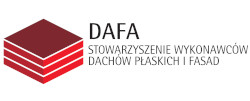Open Access (Artykuł w pliku PDF)
Influence of closing and opening cycles on the properties of aluminium framed glazed fire door
dr inż. Bartłomiej Sędłak, Instytut Techniki Budowlanej, Zakład Badań Ogniowych
ORCID: 0000-0002-8173-3585
mgr inż. Marzena Jakimowicz, Instytut Techniki Budowlanej, Zakład Inżynierii Elementów Budowlanych
ORCID: 0000-0002-4715-6438
Adres do korespondencji: Ten adres pocztowy jest chroniony przed spamowaniem. Aby go zobaczyć, konieczne jest włączenie w przeglądarce obsługi JavaScript.
DOI: 10.15199/33.2024.02.07
Oryginalny artykuł naukowy
Streszczenie. Drzwi przeciwpożarowe pełnią kluczową rolę w spełnieniu wymagań dotyczących bezpieczeństwa pożarowego obiektów budowlanych. Stanowić mają efektywną barierę dla ognia i dymu oraz wysokiej temperatury, dlatego też powinny mieć odpowiednią klasę odporności ogniowej oraz dymoszczelności, a także cechować się zdolnością do samoczynnego zamykania. Zgodnie ze stosowanymi powszechnie w Europie procedurami, każda z wymienionych cech określana jest niezależnie. W warunkach rzeczywistego pożaru może jednak dojść do sytuacji, w której drzwi przeciwpożarowe muszą zadziałać w prawidłowy sposób po wielokrotnych cyklach zamykania i otwierania. W artykule przedstawiono wyniki badań odporności ogniowej przeszklonych drzwi aluminiowych profilowych poddanych wcześniej badaniom cykli zamykania i otwierania. Cykliczne otwieranie i zamykanie drzwi powoduje zwiększenie przepuszczalności powietrza przez element. Może także wpływać na deformację skrzydła drzwiowego w trakcie badania odporności ogniowej, a w efekcie powodować utratę szczelności ogniowej.
Słowa kluczowe: odporność ogniowa; samozamykalność; szczelność ogniowa; izolacyjność ogniowa; przepuszczalność powietrza; trwałość mechaniczna; cykle wielokrotnego otwierania i zamykania.
Abstract. Afire door plays a key role in fulfilling the fire safety requirements of building structures. It is supposed to serve as an effective barrier to fire and smoke, which is why it should have an adequate fire resistance rating, smoke tightness class and it should feature a self-closing function. According to procedures applicable in Europe, each of the features mentioned above is determined independently. In real fire conditions, itmight happen that the fire door shall work properly after many closing and opening cycles. This paper presents the results of fire resistance tests on aluminium framed glazed door previously subjected to closing and opening cycles.The numerous closing and opening cycles increase the amount of air migrating through the door. It may also affect the deformation of the door leaf during the fire resistance test. The consequence of which may be loss of fire integrity. However, it cannot be declared unequivocally that subjecting the door to a specific number of closing cycles causes a loss in its fire performance.
Keywords: fire resistance; self-closing; fire integrity; fire insulation; fire doors; air permeability; mechanical durability; repeated opening and closing cycles.
Literatura
[1] Dundar U, Selamet S. Fire load and fire growth characteristics in modern high-rise buildings. Fire Saf. J. 2023;DOI: 10.1016/j. firesaf. 2022.103710.
[2] Alianto B, Nasruddin N, NugrohoYS. High-rise building fire safety using mechanical ventilation and stairwell pressurization: A review. J. Build. Eng. 2022, DOI: 10.1016/j.jobe.2022.104224.
[3] Yi X et al. Numerical Simulation of Fire Smoke Spread in a Super High-Rise Building for Different Fire Scenarios. Adv. Civ. Eng. 2019; DOI: 10.1155/2019/1659325.
[4] Izydorczyk D, Sędłak B, Sulik P. Fire doors in tunnels emergancy exits – smoke control and fire resistance tests in IFireSS 2017 – 2nd International Fire Safety SymposiumNaples, Italy, June 7-9, 2017, 2017, pp. 1–8.
[5] EN 13501-2:2023 Fire classification of construction products and building elements. Classification using data from fire resistance tests, excluding ventilation services.
[6] KimY-S, Huh Y-R, Jin S-H, Kwon Y-J. Derivation of Defect Factors and Defect Rates of Fire Doors in Apartment Buildings through Field Investigation. Fire Sci. Eng. 2022; DOI: 10.7731/KIFSE. 11bc3934.
[7] McKeen P, Liao Z. Numerical analysis on the hazards of open stairwell doors in high-rise residential buildings. J. Build. Eng. 2022; DOI: 10.1016/j. jobe. 2022.104561.
[8] Hopkin C, Spearpoint M,Wang Y. Internal door closing habits in domestic premises: Results of a survey and the potential implications on fire safety. Saf. Sci. 2019;DOI: 10.1016/j.ssci.2019.06.032.
[9] Joon M-O. A Study on Major Issues in Litigation on Fire Door Performance. Fire Sci. Eng. 2021; DOI: 10.7731/KIFSE.265d7867.
[10] Calayir M, Selamet, S Wang YC. Post-earthquake fire performance of fire door sets. Fire Saf. J. 2022; DOI: 10.1016/j.firesaf.2022.103589.
[11] Ayman N, Isamu Y, orn V. Thermal and mechanical transient behaviour of steel doors installed in non-load-bearing partition wall assemblies during exposure to the standard fire test. FireMater. 2016; DOI: https://doi. org/10.1002/fam.2365.
[12] Seo HW,An JH, Choi DH. A Study on the Fire Resistance Performance of the Steel Fire Doors Depending onCoreMaterial. J. korean Soc. hazardMitig. 2013;DOI: 10.9798/KOSHAM. 2013.13.5.247.
[13] Kim M, Min S. Study on theAnalysis of the Temperature-Rise Tendencies of Insulated Steel Fire DoorsAccording to the Properties of the Core Materials. J. Korean Soc. Hazard Mitig. 2022; DOI: 10.9798/KOSHAM. 2022.22.1.141.
[14] Sędłak B, Paweł S. Thermal distributions through profiled aluminum fire-resistant doors depending on the side of the fire exposure. Mater. Bud. 2023; DOI: 10.15199/33.2023.01.06.
[15] Izydorczyk D, Sędłak B, Papis B, Turkowski P. Doorswith Specific Fire Resistance Class. Procedia Eng. 2017; DOI: 10.1016/j.proeng.2017.02.010.
[16] Panno C, Goncalves J, Prager G, Bolina F, Tutikian BF. Analysis of the fire resistance of normal wooden doors exposed to fire conditions. Rev. la Construcción. 2020; DOI: 10.7764/rdlc.19.2.359.
[17] Khalid MH, Abd Rahman, Abdul Latif RH, YahyaMN. Prototyping and Performance Evaluation of Fire Rated Acoustic Door. Int. J. Integr. Eng. 2018; DOI: 10.30880/ijie. 2018.10.04.002.
[18] Kim YU, Chang SJ, Lee Y-J, No H, Choi GS, S. Kim S. Evaluation of the applicability of high insulation fire door with vacuum insulation panels: Experimental results from fire resistance, airtightness, and condensation tests. J. Build. Eng. 2021; DOI: 10.1016/j. jobe. 2021.102800.
[19] Levinskas R et al. Modified xonotlite–type calcium silicate hydrate slabs for fire doors. J. Fire Sci. 2018; DOI: 10.1177/0734904118754381.
[20] Azieyanti NA, Hakim A, Hasini H. Mixture of natural fiber with gypsum to improve the fire resistance rating of a fire door: The effect of kapok fiber. J. Phys. Conf. Ser. 2017; DOI: 10.1088/1742-6596/914/1/012019.
[21] Nor Hishamuddin Manaf M, Nurul Farhanah Azman, Nor Musa M, Syahrullail Samion, Nor Azwadi Che Sidik, Asako Y. Fire Resistance Rating for Gypsumand Kapok Fiber CompositeMaterials. J. Adv. Res. Fluid Mech. Therm. Sci. 2022; DOI: 10.37934/arfmts. 98.2.1523.
[22] Kwang Yin JJ, Yew MC, Yew MK Saw LH. Preparation of Intumescent Fire Protective Coating for Fire Rated Timber Door. Coatings. 2019; DOI: 10.3390/coatings9110738.
[23] Mansor MNL et al. Development of a Fire Retardant Door Made of Earth Materials. 2022, pp. 117 – 121.
[24]Won S-H, Lee J, Lee H-Y. Double Gasket Research and Development to Improve the Fire Resistance Performance of aNoThreshold FireDoor. Fire Sci. Eng. 2022;DOI: 10.7731/KIFSE.51a66e01.
[25] Moro L, Boscariol P, De Bona F, Gasparetto A, Srnec Novak J. Innovative Design of Fire Doors: Computational Modeling and Experimental Validation. Fire Technol. 2017; DOI: 10.1007/s10694-017-0658-y.
[26] Tripathi A, Kumar C, Grinnaert T, Kumar A. Testing a Fire Door Through Simulation. 2020, pp. 233–248.
[27] Kyaw Oo D’Amore G, Mauro F, Marinò A, Caniato M, Kašpar J. Towards the Use of Novel Materials in Shipbuilding: Assessing Thermal Performances of Fire-Doors by Self-Consistent Numerical Modelling. Appl. Sci. 2020; DOI: 10.3390/app10175736.
[28] Khalifa MA, Aziz MA, Hamza M, Abdo S, Gaheen OA. Improvement of fire door design using experimental and numerical modelling investigations. J. Struct. Fire Eng 2022; DOI: 10.1108/JSFE-07-2021-0048.
[29] Boscariol P, De Bona F, Gasparetto A, Moro L. Thermo-mechanical analysis of a fire door for naval applications. J. Fire Sci. 2015; DOI: 10.1177/0734904114564955.
[30] Zhang S, Li C, Miao H, Zhang J, Zhang H. Design and Thermal Analysis of the Large Fire Door forAP1000 Nuclear Reactor. J. Therm. Sci. 2020; DOI: 10.1007/s11630-019-1138-0.
[31] Thanasoulas I, Lauridsen D, Husted B, Giuliani L. Large-Scale Fire Tests on Sliding Doors for Building Applications. Fire Technol. 2022; DOI: 10.1007/s10694-022-01255-w.
[32] Sędłak B, Sulik P, Garbacz A. Scale effect in the evaluation of the fire resistance of glazed partitions. J. Build. Eng. 2022; DOI: 10.1016/j. jobe. 2022.104108.
[33] Sędłak B, Sulik P, Garbacz A. Fire resistance of aluminium – glazed partitions depending on their height. FireMater. 2021; DOI: 10.1002/fam. 2971.
[34] PN-EN 12365-1÷4 – Okucia budowlane – Uszczelki i taśmy uszczelniające do drzwi, okien, żaluzji i ścian osłonowych.
Przyjęto do druku: 10.01.2024 r.
Materiały Budowlane 2/2024, strona 30-38 (spis treści >>)



























